If you are passionate about succulents and attracted to their beauty, this flowering succulents article is for you and will make you love succulent plants even more.
There are many flowering plants that you can buy to make your garden look beautiful, but succulents that produce flowers are something special and require patience and proper care.
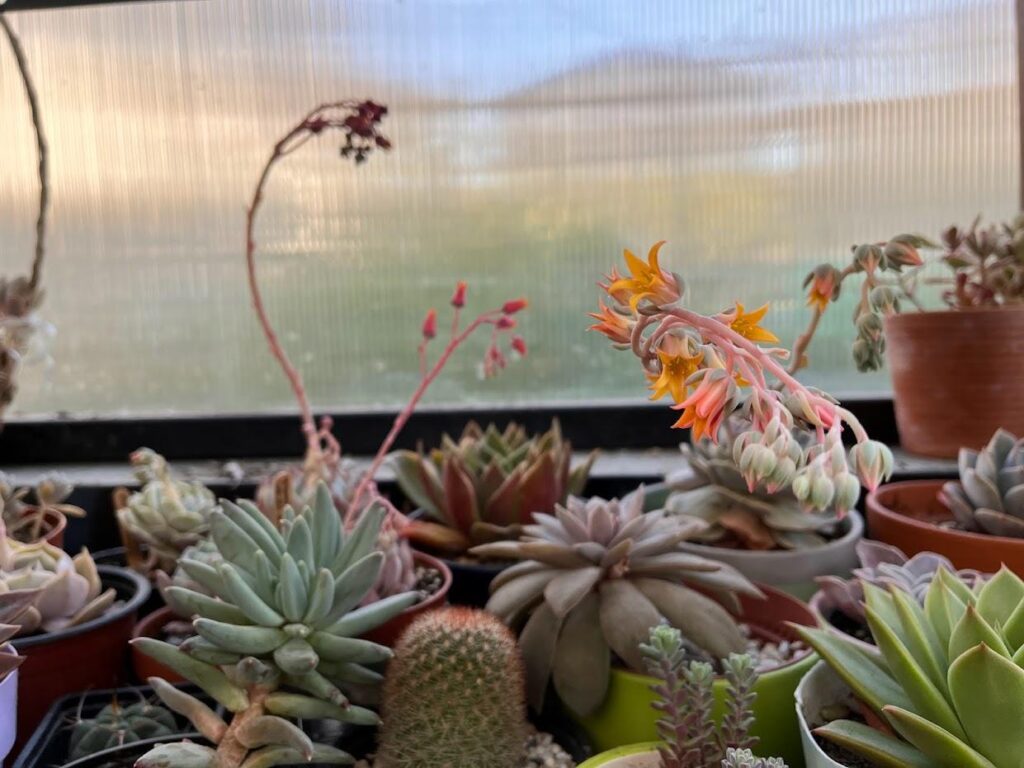
You might wonder if all the succulents bloom so we will answer this question straight ahead- BIG YES.
Every succulent plant that has opportunities to grow in light, sunny areas with restricted watering and well-drained soil will produce flowers at some point in life.
Here I will present to you some of my flowering succulents and allow you to learn more about their specific needs and how I take care of them.
Cacti species
Since all cacti are succulents, I will start by presenting a few of my cacti from my collection that love to bloom during their growing season.
When mentioning cactus, we think of prickly plants with areolas thriving best in dry, arid climate areas. Areolas are parts of the cactus plant where different structures such as spines, hair, glochids, flowers, or branches arise.
Cacti plants do not need fertilization to bloom. They love the poor soil, and luckily, if you ensure them a sunny spot, they will return the favor with beautiful flowers.
Many notable species around the growers will thrive and bloom even without paying attention to them.
Some examples are the Christmas cactus with star-shaped flowers, Easter cactus, Peanut cactus, Prickly pear cactus, and Orchid cactus.
Mammilaria species
More than 300 known species in the Mammilaria genus make it one of the largest genera in the Cactaceae family.
They originate from Mexico, cylindrical, building colonies, or living solitarily.
They are easy to manage and bloom more than once within one season.
They love warm and sunny weather, poor soil, reduced watering, and the right pot to grow in.
If you begin now, I recommend starting with Mammilaria species since it is easy to grow them indoors and outdoors and expect them to bloom.
Enjoy some of my beautiful Mammillaria in the blooming season.
Mammilaria carmenae f.rubrispina
Small cactus plant, with soft red spines looking like a hairy covering with striking pink flowers.
Grows in clusters or solitary with a rounded form, all the spines are radial with no central ones.
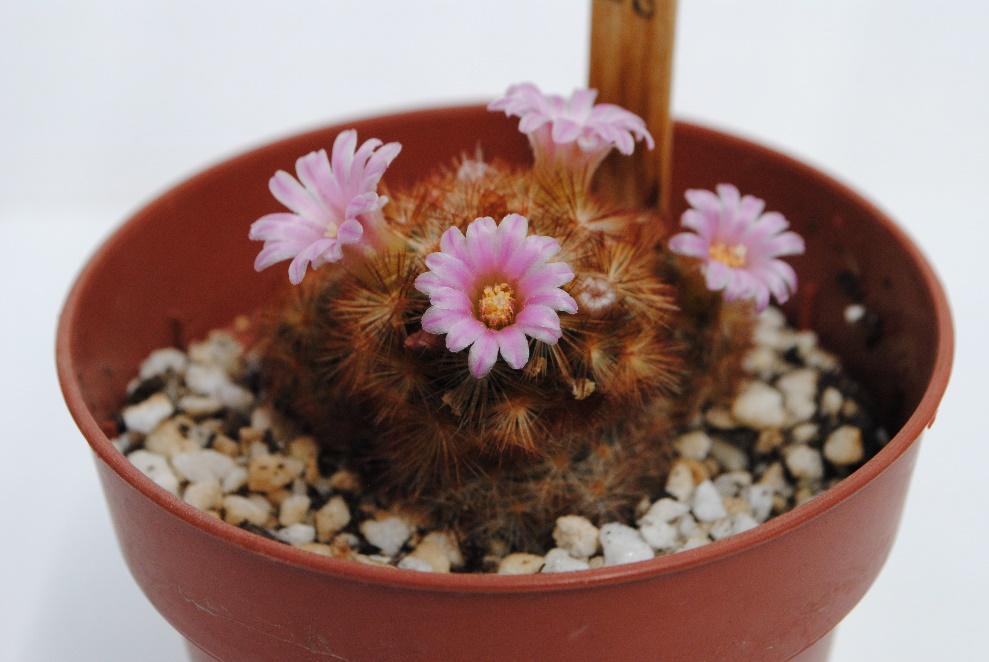
RELATED: 25 Beautiful And Easy To Grow Purple Succulents For Homes & Offices
Mammilaria carmenae
Also known under the Pincushion cactus botanical name is an attractive egg-shaped, drought-tolerant plant always surprising with more than one white flower.
Small to medium plant that will not grow more significant than 15cm (6in) broad.

Mammilaria bombycina
One of the most popular cactus plants with white hairy covering and central spikes with a reddish-brown color.
The appearance is unique, and the blooms give an incredible feeling to the person watching them.
She often grows solitary in the first years, but she enlarges in the surrounding colony in her lifecycle.
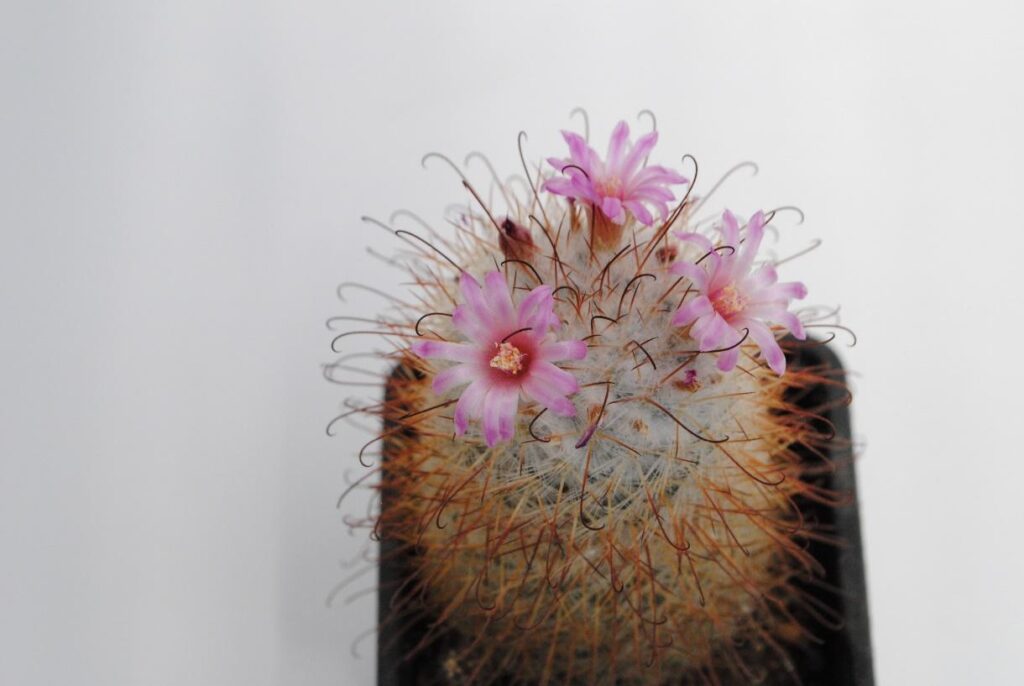
Rebutia species
If you are looking for cacti species with “a river of flowers” at once, you want to have at least one species from the Rebutia genus.
They grow spherical in small colonies, almost first, to bloom in spring, and their flowers will last longer than you expect.
Colors are different depending on the hybrid or species itself.
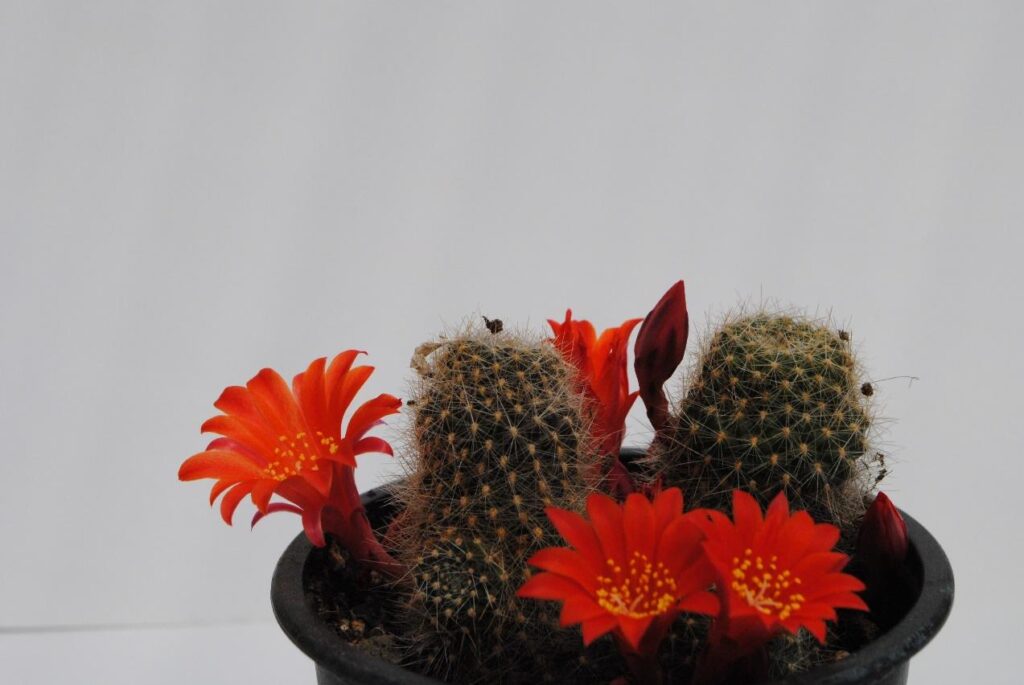
Echeveria species
I bet every succulent lover has at least tried to grow Echeveria.
Echeveria belongs to the Crassulaceae family, and their flowers grow on stalks that sometimes might be tall.
These flowering succulents have attractive flowers that you can often see during the year.
There are many nurseries nowadays growing attractive hybrids using the process of pollination to mix different species within this genus.
Flowers are inflorescences. They are a formation of more than one tiny flower, bell-like on a stalk coming out from the central part of the rosette.
For you, I took photos of my latest blooming Echeveria, and I hope you will enjoy watching them shine as much as I do.
Echeveria cuspidata var gemmula
Small elegant rosette with thick leaf edges spin alike.
Color of the leaves changes from bluish-white to dark white depending on the season.
Flowers are orange-red colored, and as with every Echeveria, they grow on a central stem.
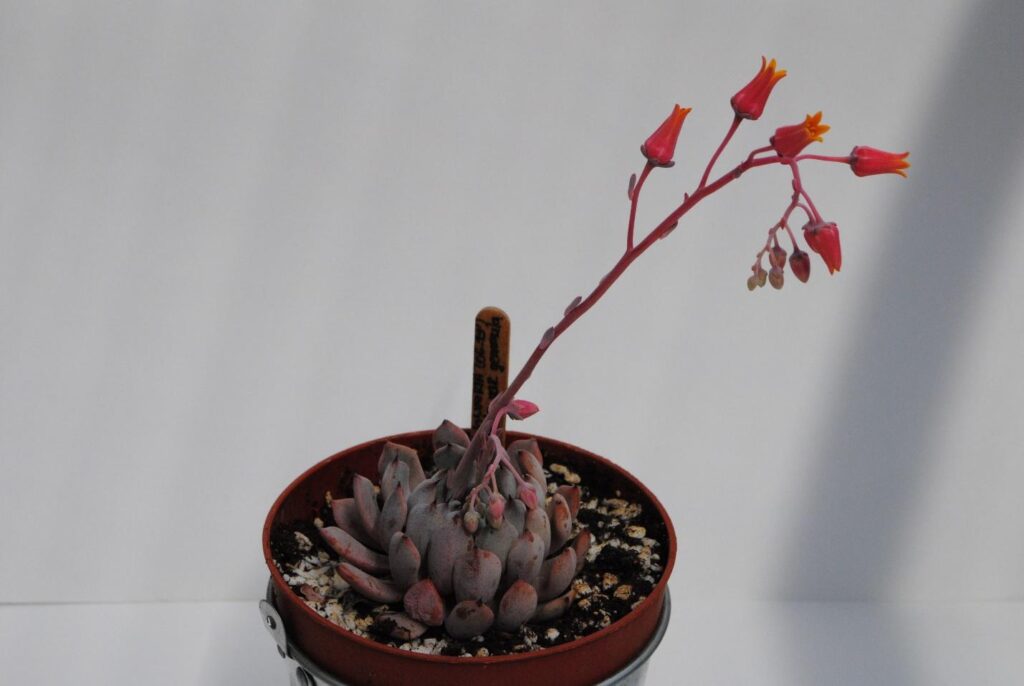
Echeveria colorata
If I have to be honest with you, this might be my favorite Echeveria in my collection.
The flowers and the plant have remarkable visibility, complete with colorful tones and light dust from the farina cover.
The edges of the leaves are darker, and the plant itself grows in the circle’s diameter.
When it comes to new rosettes, in my case, they showed up as selfish plants, which have not given me any baby plants in our three years of friendship. So lucky you if you can collect at least one baby from this beautiful mama plant.
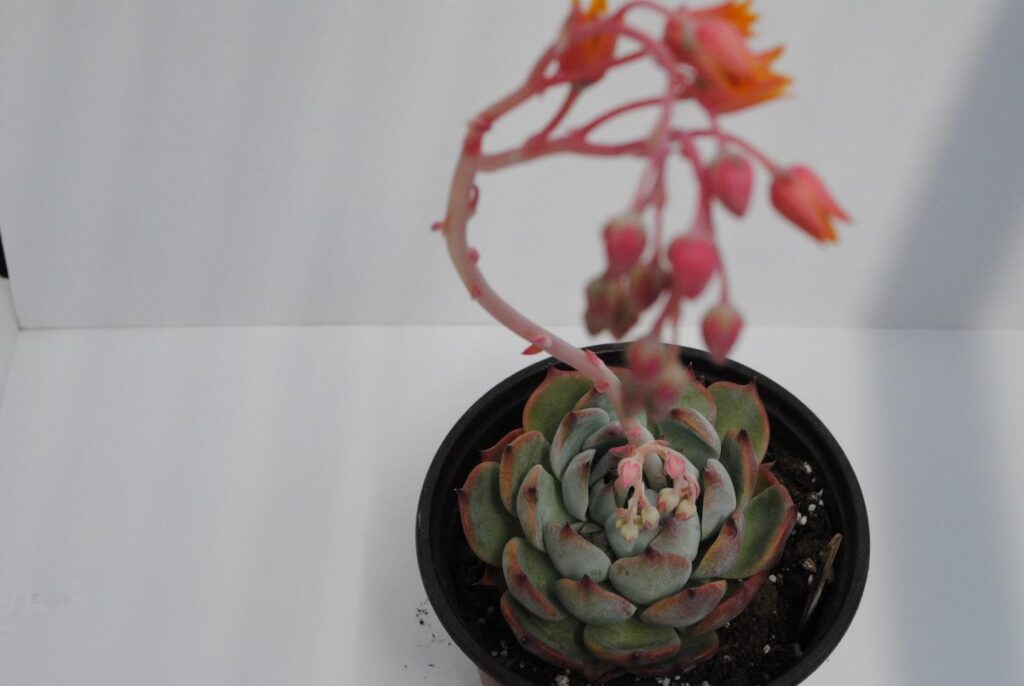
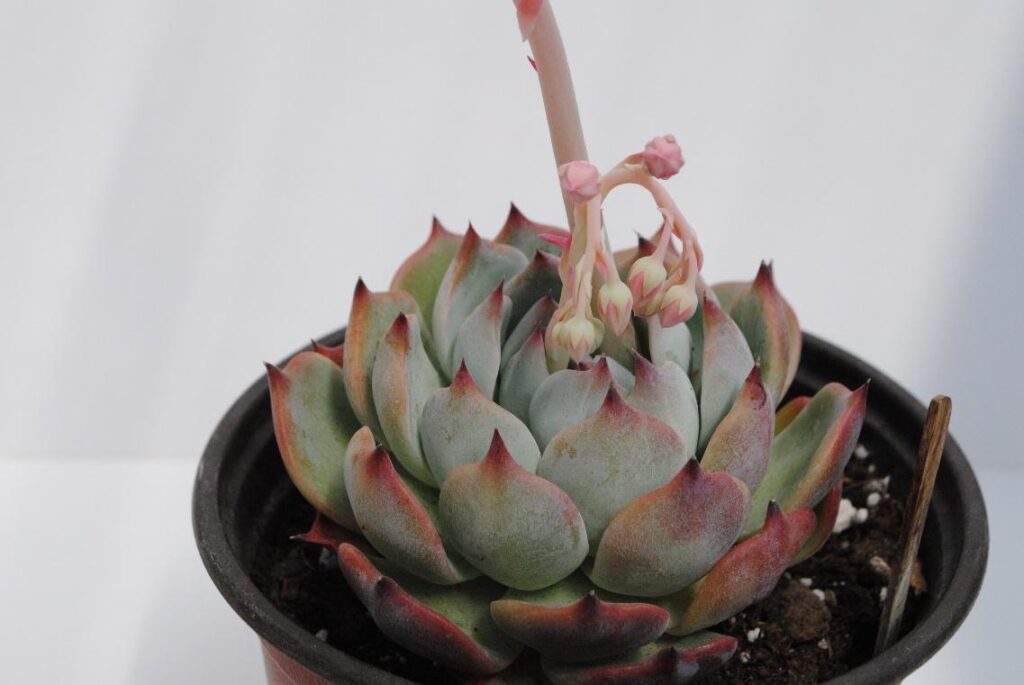
Echeveria Lola
When you stare at the leaves, you might find them shining as crystals which, in my opinion, gives this plant something special about having it.
The plant is white-colored, with short but broad leaves collected compactly in the rosette.
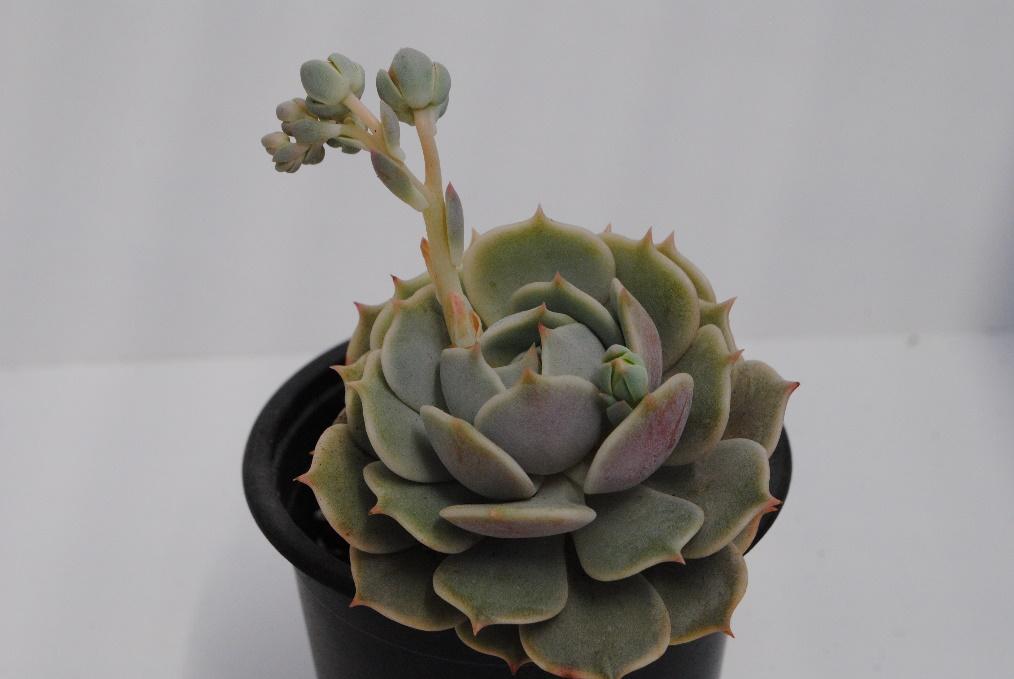
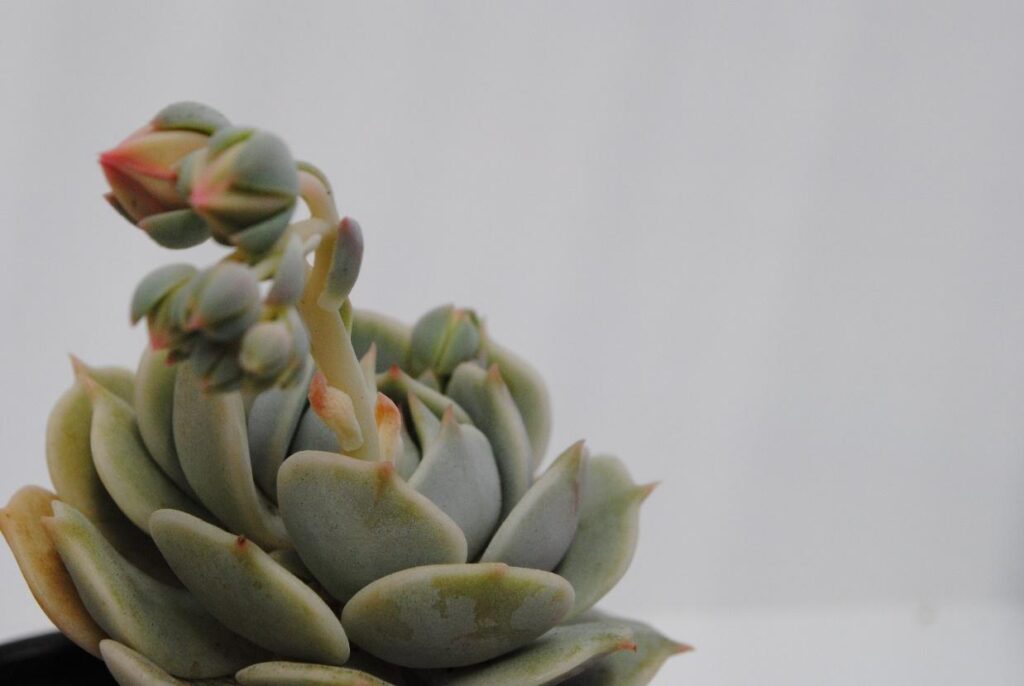
Echeveria Lotus
White-looking Echeveria with nicely organized leaves around the central axis.
Flowers are set on a long stalk and have vibrant yellow flowers with orange tones.
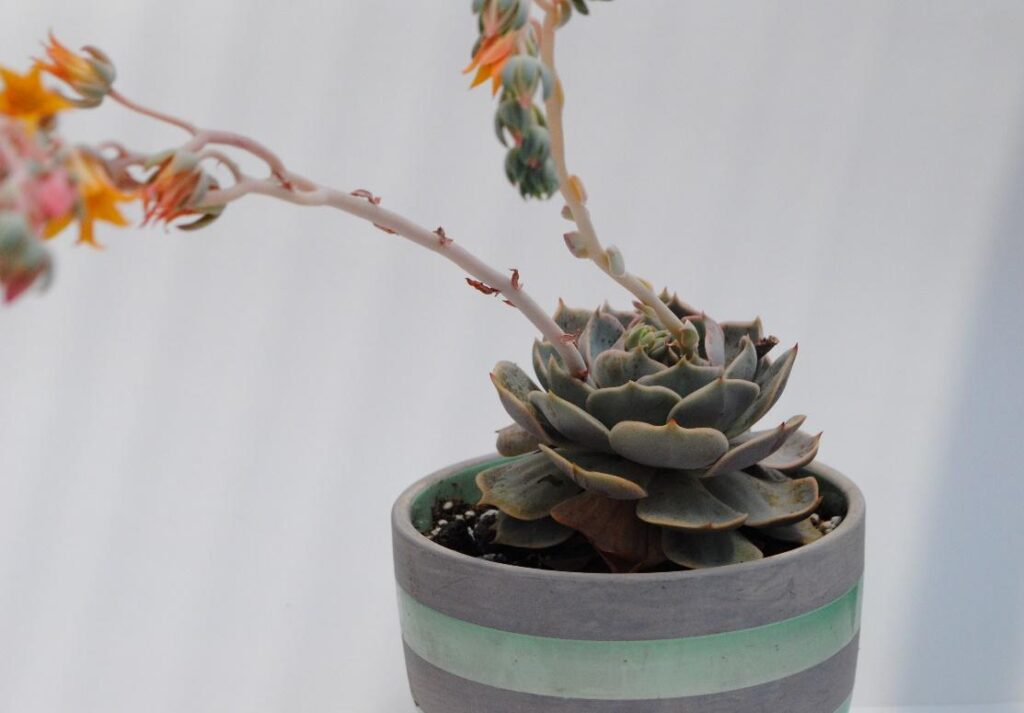
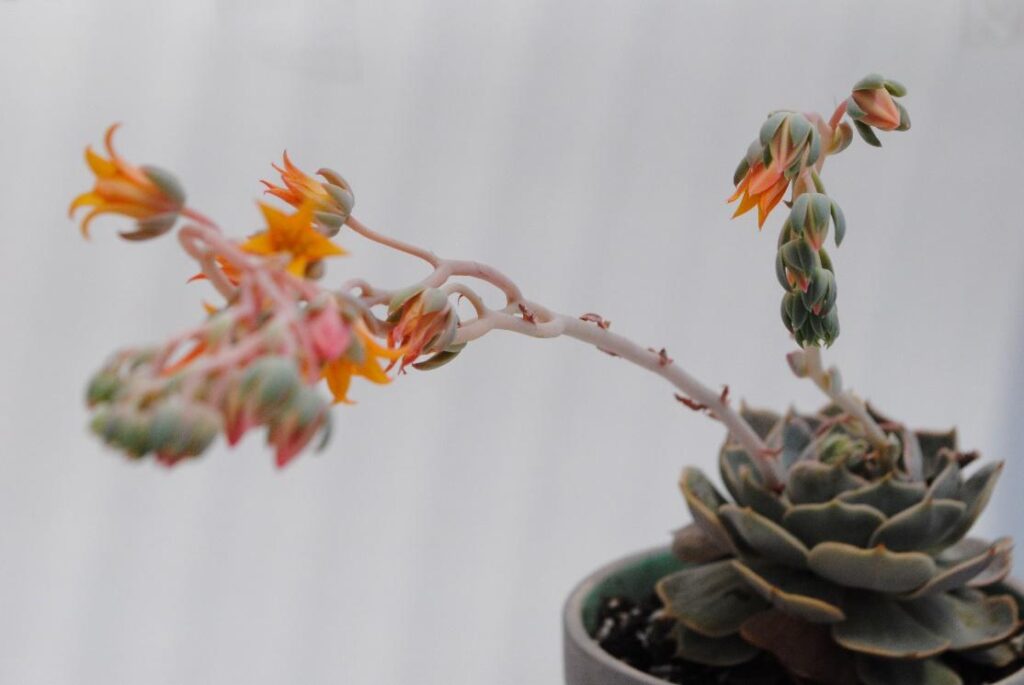
Echeveria Garoto
Flowering succulent with lovely thick purple leaves. It has a small amount of flour that protects from sunburn in early spring when sun rays are of higher intensity.
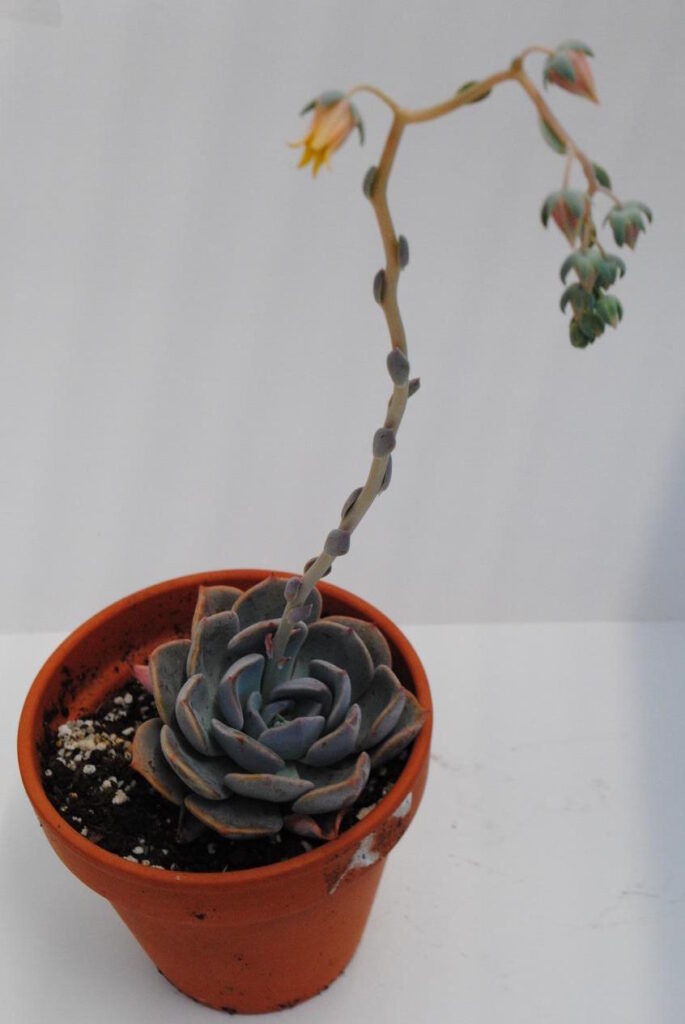
Echeveria Fabiola
Small Echeveria with leaves that grow in circles visualizing tower. A green-colored succulent with painted leaf edges makes it special and unique.
Yellow flowers are growing on stalks and giving exciting contrast to the whole plant.
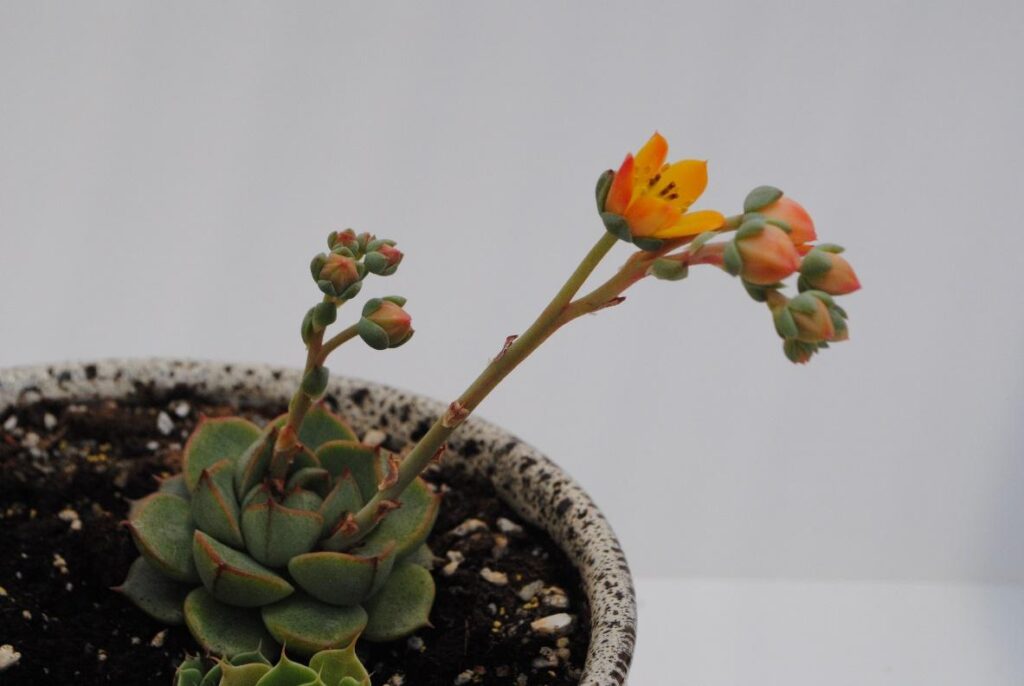
Echeveria Liliacina
White spoon-shaped leaves covered with many farina make this plant look like a cloud.
You will be fascinated by how this plant looks in all seasons since the pinkish color appears more when cold nights in autumn and spring are present.
It has a long flower stalk with beautiful flowers on it.
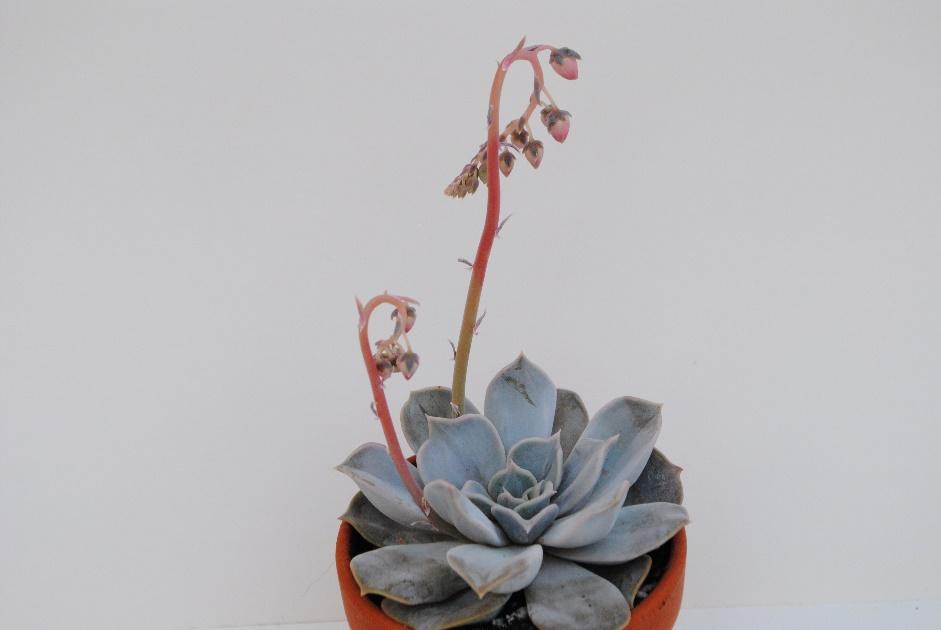
E. pulidonis x E. colorata ‘Lindsayana’
An exciting hybrid between E.Pulidonis and E.Colorata with yellow flowers.
The plant has characteristics from both parents with thick and colorful leaves such as Colorata and precisely painted edges of the leaves like Pulidonis.
This hybrid is attractive and shared among the world’s Echeveria lovers. If there is a chance to find it, do not think twice about buying it.
RELATED: Why Is My Succulent Dying? The Ultimate Guide To Saving A Succulent
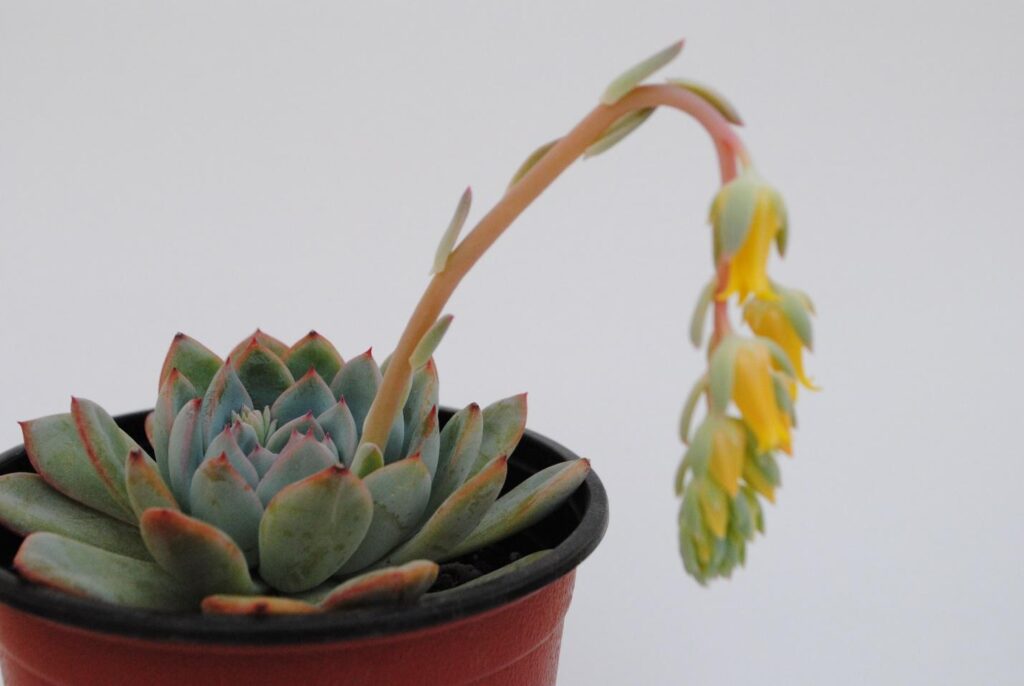
Echeveria Rundelli
A succulent that loves to be stressed and can surprise with great colors.
Leaves are specifically organized and a little bit different from most Echeveria.
They look like tiny fingers arranged tightly in more circles.
The color of the leaves is authentically blue, constantly changing when more sun is present.
Flowers are the same as the other echeveria plants in the structure and organization, and the color is red from the outside with yellowing parts inside the bloom.
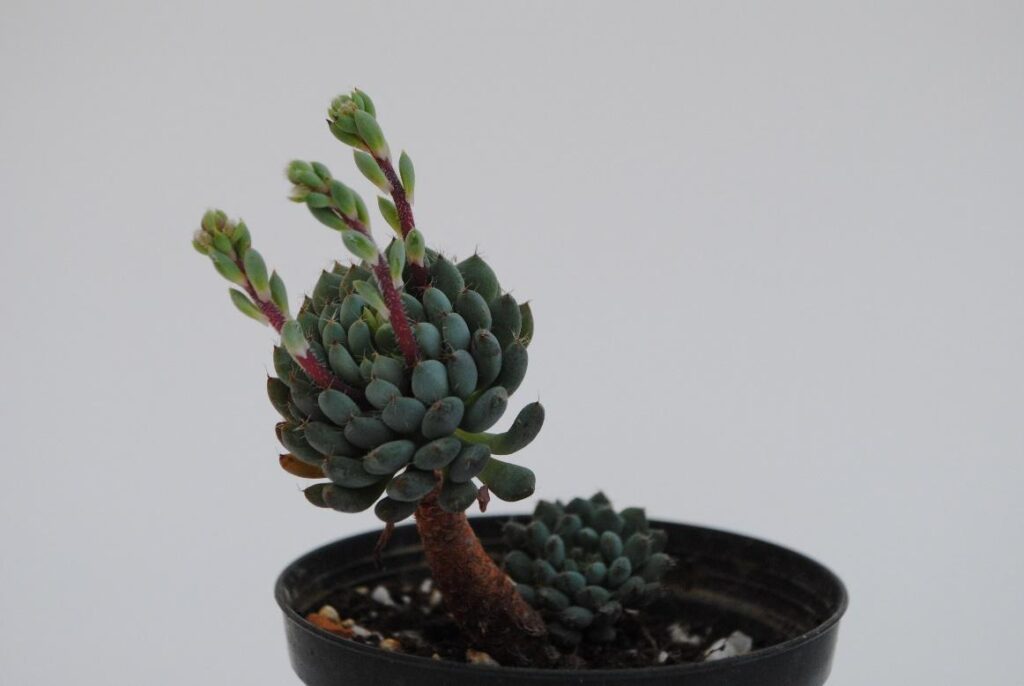
Echeveria Simulans
White wavy leaves make everyone fall in love at first sight.
This succulent has pink flowers that look wonderful and gives an accent to the whole plant image.

Crassula species
Many different flowering succulents belong to this genus of plants.
They differ in color, shape, size, and flowers.
It is easy to grow and can be collected from everyone since they are huge groups with plants easy to care for, such as money tree (Jade plant botanical name) to species that require specific conditions such as Crassula Buddha’s temple.
Crassula pubescens subs. radicans
Small but exciting plant, with tiny leaves on stalks organized in circles within the whole branch.
The natural color of the leaves is green, but during the cold seasons and under total sun exposure, the stress changes its color to notable red.
They have attractive small flowers on the top of each stalk, organized in a ball structure with bright white blossoms.
They do look very nice when mixed with other plants.

Crassula nudicaulis – Devil’s horns cultivar
It is unusual to find this succulent in succulent gardens since it is green and not attractive at first sight.
The flowers are white but noticeable because the stalk on which blooms are attached is long and thick.
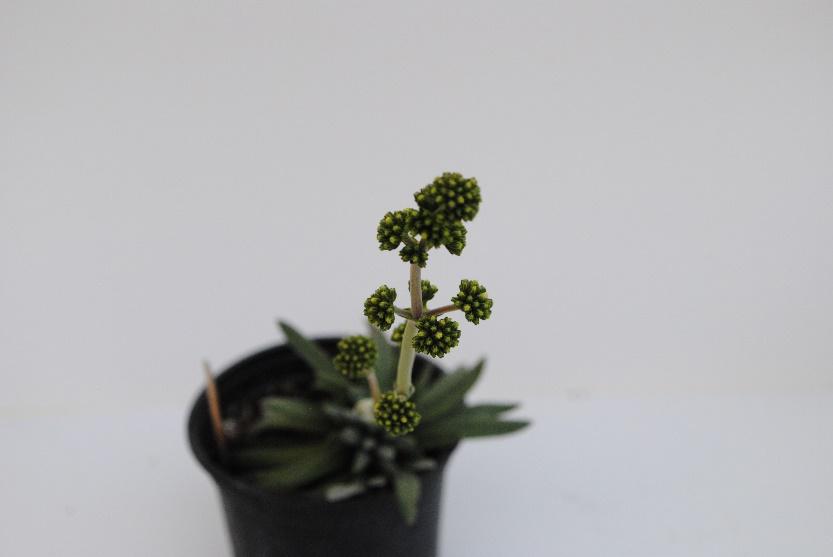
Crassula pellucida subs. marginalis ‘Rubra’
The deep green base of the leaf color with a flash of red on the edges gives this Crassula something that makes everyone want to buy it.
Leaves look like tiny hearts arranged on branches that fall naturally and give an exciting display of the whole plant.
Considered easy to take care of, it is very famous in the arrangements with other succulents.

RELATED: Succulents: Growing Indoors and Top 7 Shops To Buy Them Online
Senecio species
Another interesting genus of flowering succulents is Senecio.
Most of them crawl with unique names given by the things they look like.
Some of the most famous succulents in this group are String of Hearts, String of watermelon, String of dolphins, String of tears, and String of Pearls, which we choose to show you in full bloom below.
Senecio rowleyanus – String of pearls
This plant is now moved to the new genus Curio, but we are showing it within this group since it was Senecio for too long.
Trailing pearly plants with specific light and watering requirements is one of the most killed succulents in the succulent plants’ collections.
The interesting thing about this plant is that the leaves are transformed into small balls connected, making different-sized “pearl necklaces.”
Flowers are white-colored and look like small soft fuzzy flowers with a sensual smell.
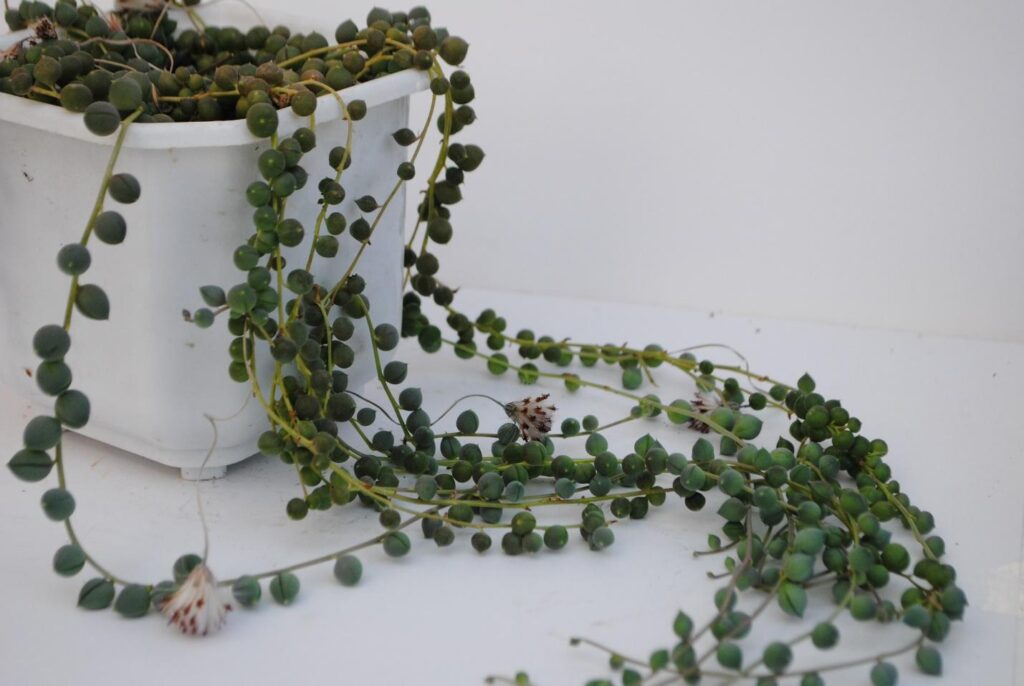

Sedum species
If you need to grow indoors, fill the rock garden in your yard, or fill another empty corner at home, sedum is the right choice.
There are so many flowering succulents from small to ones with long trailing stems, that you will love some of them.
Flowers differ from plant to plant and can be extensive and unitary or gather small flowers on one or more branches.
They can usually grow in hanging baskets and love to have plenty of suns to show their natural beauty of colors.
Their leaves usually have glossy fat foliage, and many people use them as ornamental grass because some species spread quickly and fast.
Sedum Mocinianum
Unique sedum plant with oval-shaped leaves covered with soft hairy structures. Looks like a set of branches forming an authentically bush with engaging expression.
Daisy-like flowers, white, upfield on the top of the middle stem.
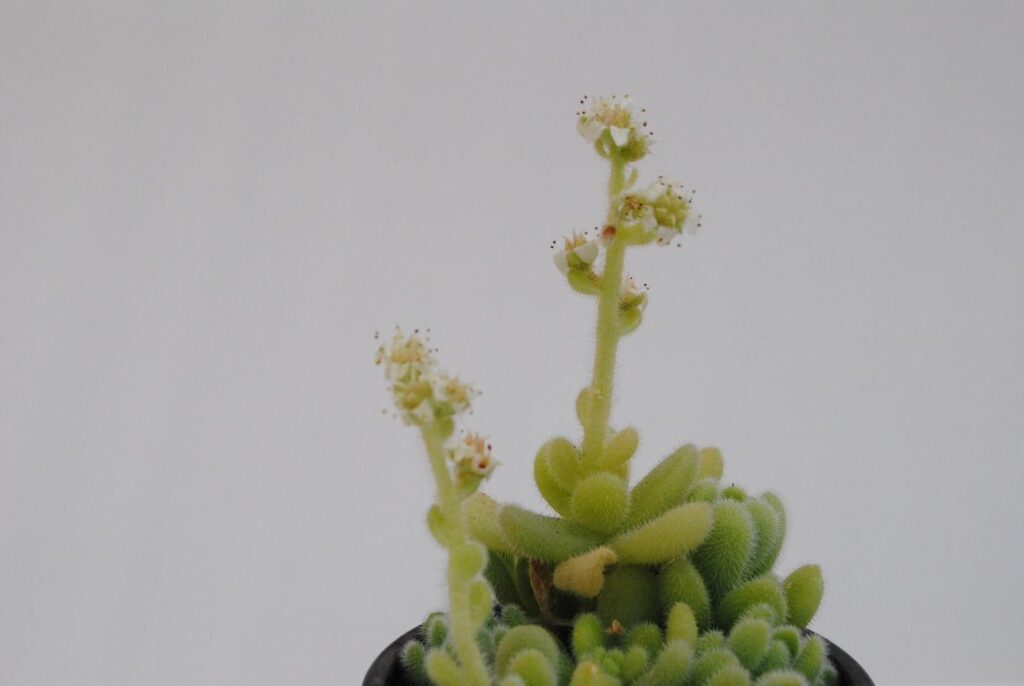
Graptopetalum species
Most flowering succulents within this genus look like shrubs with thick stems that can hold large flower heads and fleshy leaves.
Many attractive plants belong to this group, and I bet you have at least one in your collection.
Graptopetalum Mendozae
An exciting plant with leaves collected in small groups forming a small shrub.
Leaf color varies from pinky-grey to dark grey-blue depending on the sun explosion and weather conditions.
Interesting for an eye is that leaves always look covered with oil, incredibly shiny, and attractive.
Their blooms are distinguished by how they are collected and form bouquets at the top of the branch integrity.
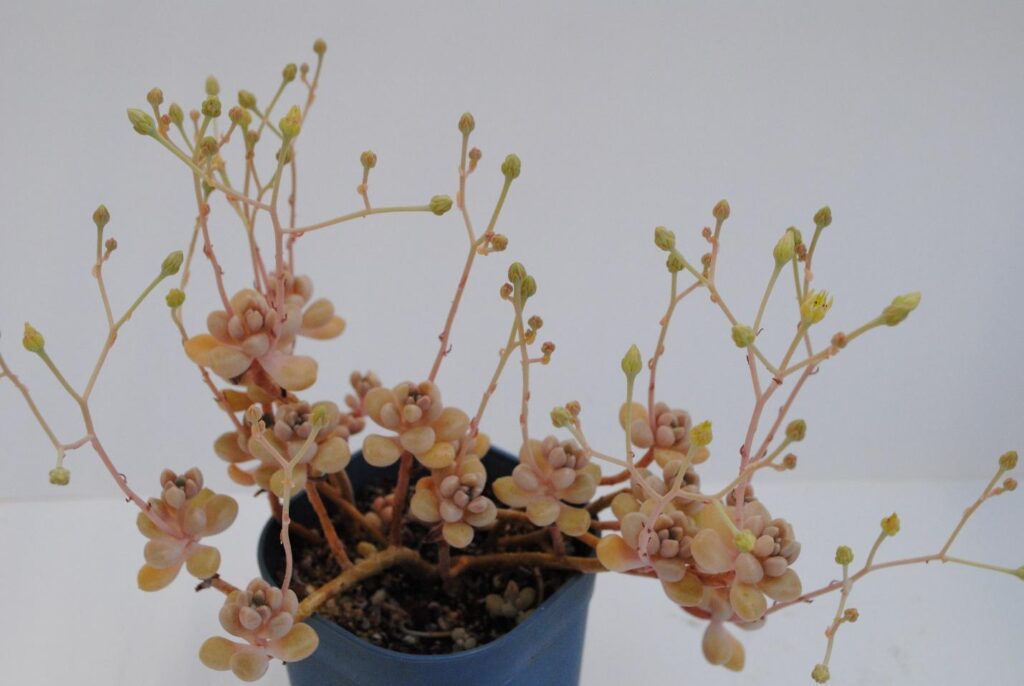
Graptopetalum Paraguayense (Ghost plant)
Succulent that will save you energy and time and let you enjoy all its beauty.
It looks like a small trailing tree with beautiful rosettes that change color depending on the location and sunbath received during one day.
When satisfied, produce small white-colored flowers on tiny stalks.
It can withstand light minus temperatures and, in warmer climate zones, could stay outside all year long.

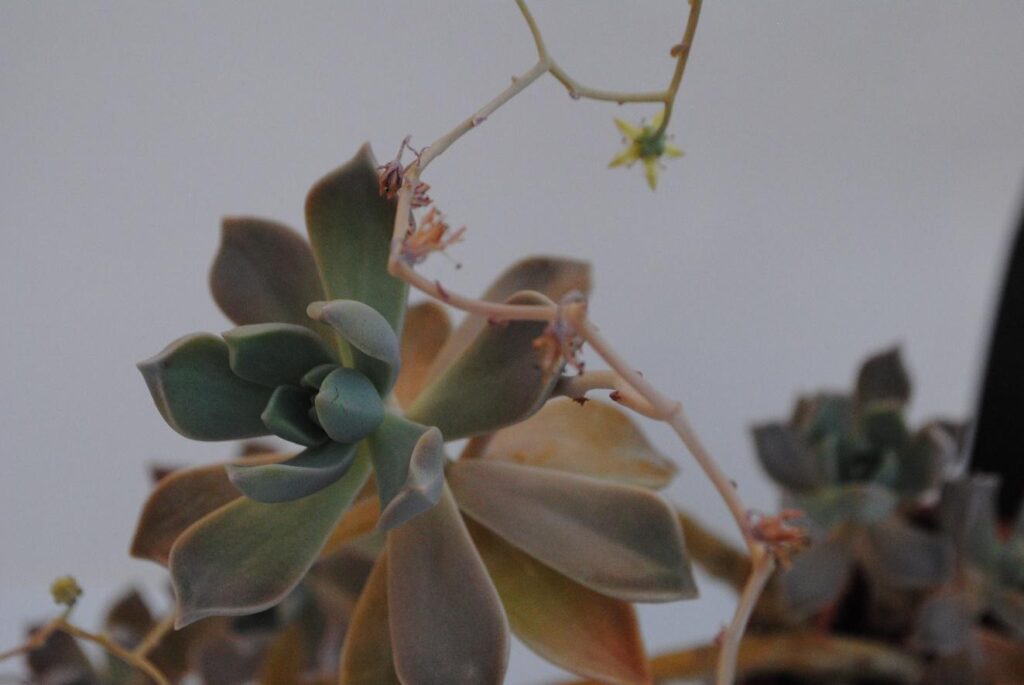
Graptopetalum MacDougallii
Green small plant with small pointed leaves. Flowers have attractive mixed colors and are widely spread around plants’ heads.
This Graptopetallum never changes its color and stays green no matter how much sun it gets.
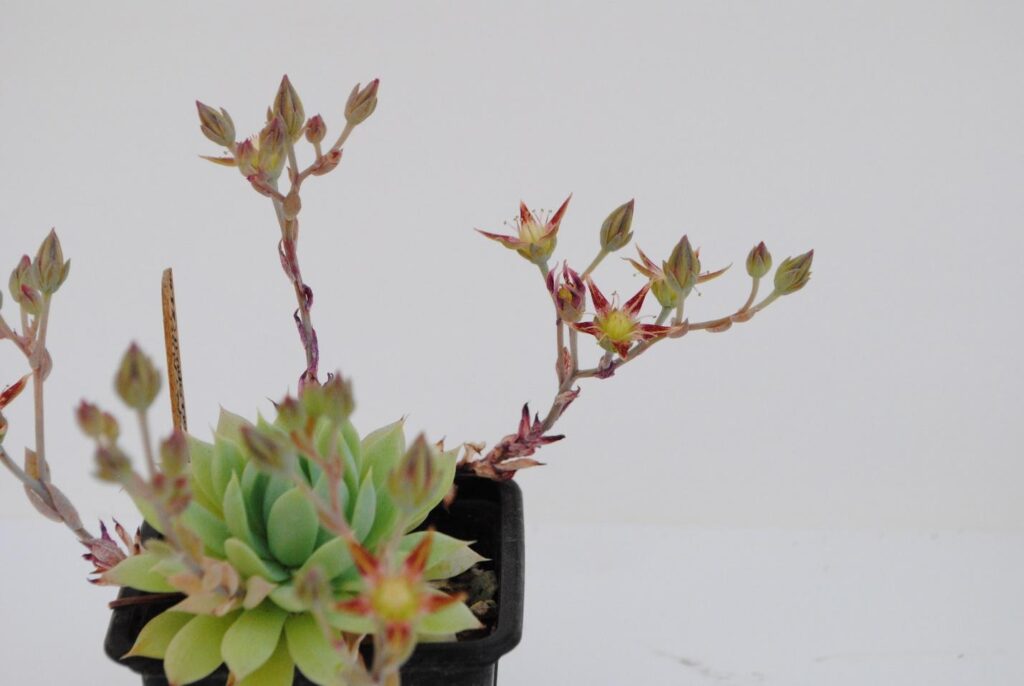
x Sedevaria species
Plants within this genus are hybrids made when Sedum and Echeveria cross.
Succulents in these groups have many different sizes and colors depending on the hybridization process.
Nowadays, many nurseries have their own hybrids, which can not be reproduced without permission.
x Sedevaria ”Blue Lotus”
It is a beautiful hybrid between the famous Sedum Suaveolans and Echeveria Elegans.
Leaves are big and thick, filled with sap and covered with farina.
The color of the leaves is whitish blue. It can withstand light frost, and it is impressive when it comes to the blooming season.
The blooms are on stems and have a lot of leaves that can be used for leaf production on new plants later. Flowers look like apricot flowers with the more yellow color of the pollen.
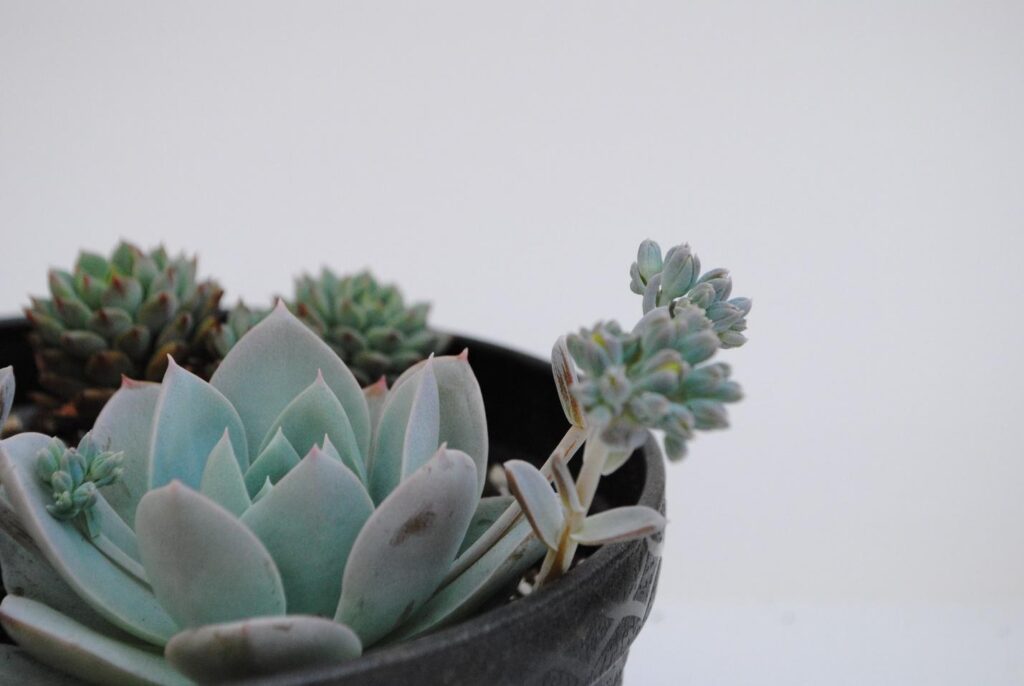
x Graptosedum species
Genus of many varieties of plants formed due to the hybridization of Graptoveria and Sedum species.
As mentioned above, hybrids depend on the mother-father plant, and blooms are similar to the parent plants.
x Graptosedum Francesco Baldi
Succulent, perfect for outdoor gardening, can withstand light to moderate frost, and show vivid colors when exposed to cold weather with plenty of suns.
It is a fast-growing plant, easy to propagate and take care of.
Blooms are very similar to the Graptoveria species with a yellowish color. It fits perfectly in succulent arrangements of different varieties.
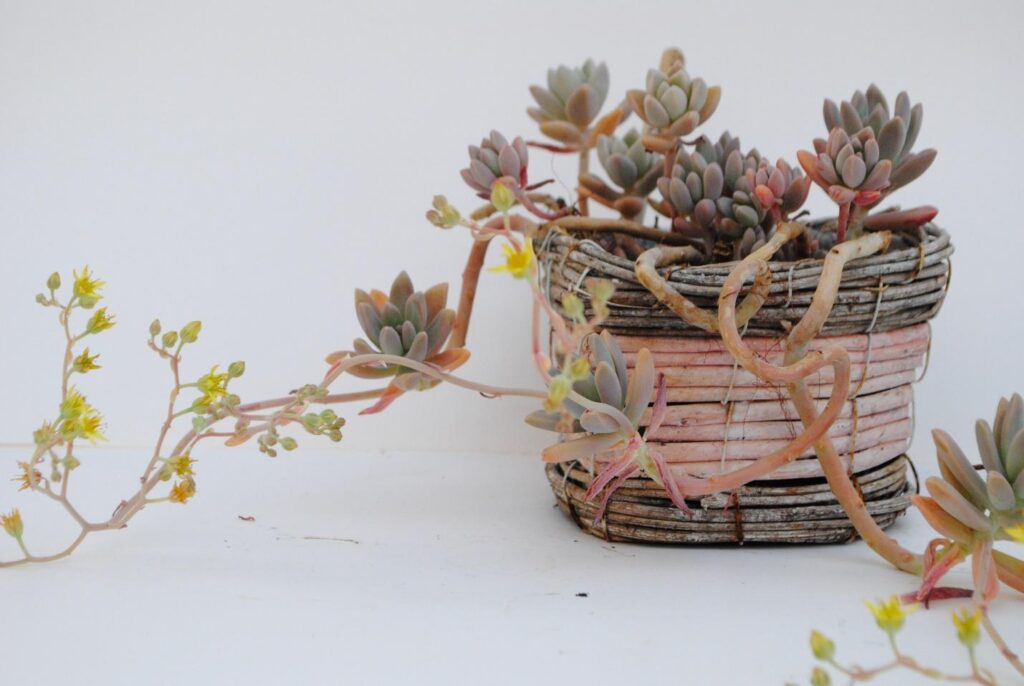
Monocarpic succulents
Monocarpic succulents are plant species that will die after their blooming season.
Flowers are using the energy of the whole mother plant leading to death.
This is a natural process typical in the Sempervivum (Hen and chicks), Aeonium plants, some Agave species, Orostachys, Greenovia, etc.
Blooming starts from the central body of the plant, elongating the whole rosette or showing as a thick stem with beautiful flowers that last as long as they have food from the mother to feed and stay fresh.
Many succulent lovers are trying to save the plant by cutting the main bloom, but there is a chance only to induce the production of baby plants, despite that once the mother plant starts the flowering process, it will die soon after a short period.
Greenovia Aurea
Attractive monocarpic succulent looking like a tiny rose with many baby roses.
The flowering starts after a period of maturing, and the flower has a solid yellow color.
The dormancy period starts during the summer when the rose is closed, waiting for cooler periods to open and glow again.
The plant body is green-blue, eye-catching for everyone.
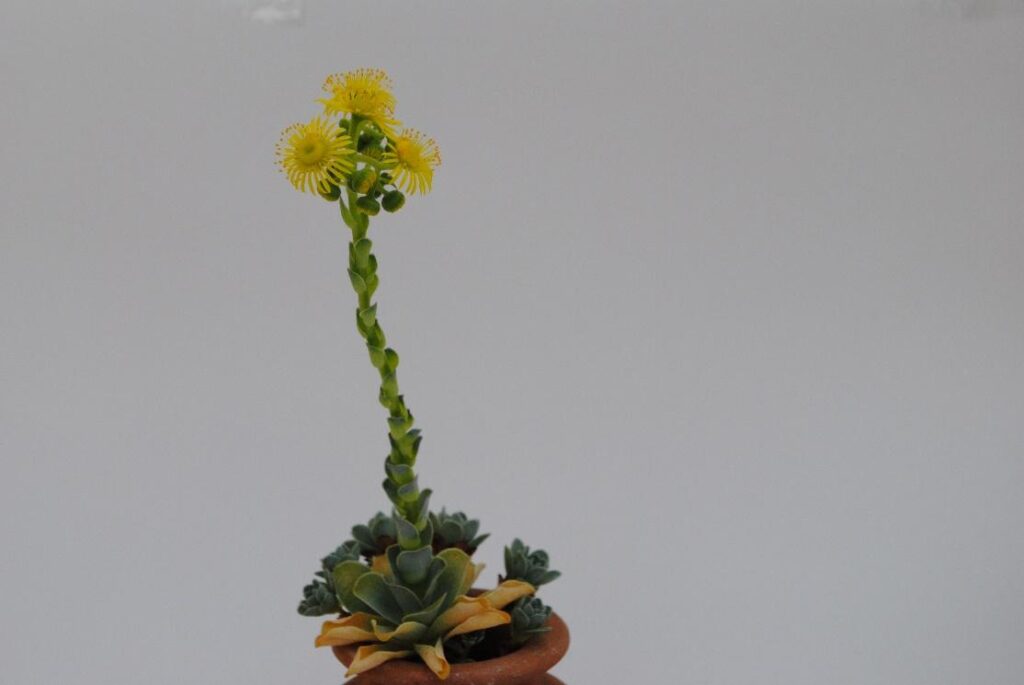
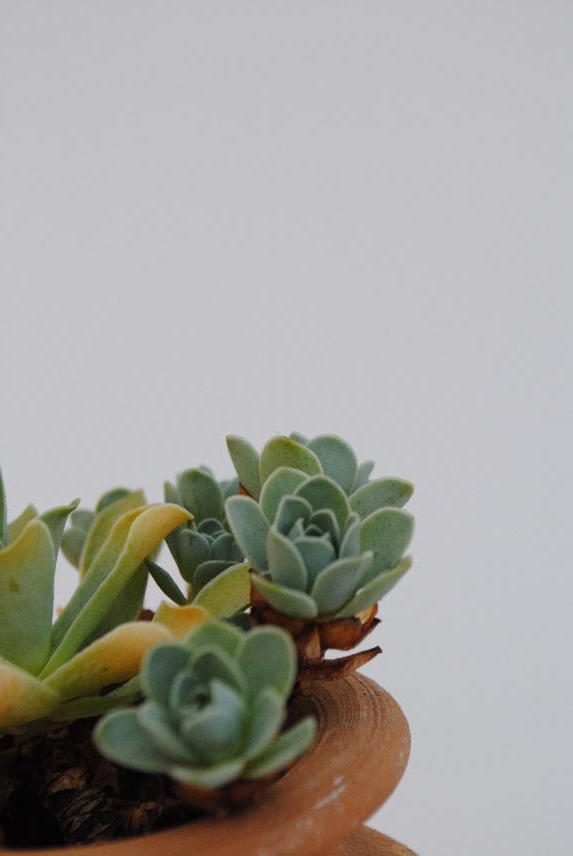
Frequently asked questions
Here is the answer to the things you ask most about. Find out below what is our opinion and suggestion for you.
Should succulents be in full sun?
Most succulents will thrive and bloom if given the proper amount of sun.
Since they are drought-resistant plants originating from dry areas, they will look better if positioned in the sun for at least 4hours a day.
However, lucky you, some succulents can stand light and not much sunny atmosphere, so feel free to choose some. Our suggestions would be Crassula, Sansevieria, and String of pearls.
Are colorful succulents real?
We can understand that everything posted on social media is not real and that some succulent pictures are just too photoshopped or even do not exist.
Even though there are more white/green succulents, you can still find beautiful colorful succulents that will blow your mind.
If you are looking for a new colorful succulent plant, go for Echeveria Rainbow, Graptopetalum Amentistinum, Kalanchoe Luciae Variegata, and many more.
I will make sure to write another article for you with a list of colorful succulents that will leave you out of breath.
Why is my succulent growing long stem with flowers?
We have explained that many species bloom in a way producing steam with flowers. It is just a natural process and how the succulents look when they bloom.
Editor’s Recommendations
What is your favorite flowering succulents? Comment below. Also, check out our other articles:
19 Heart Touching and Joyful Korean Succulents for Gardens
Learn How to and When is the Best Time to Water Succulents
30 Vibrant Types of Red Succulents for Indoor and Outdoor Gardens







